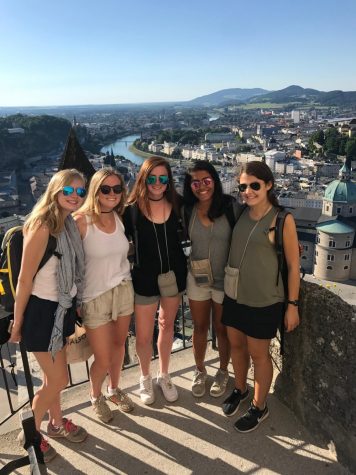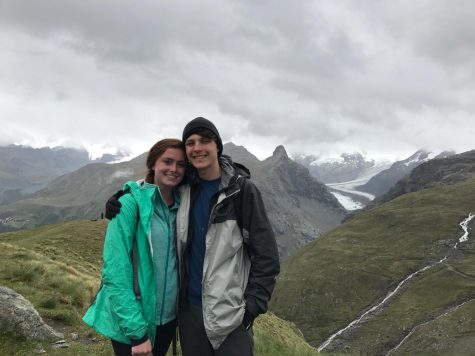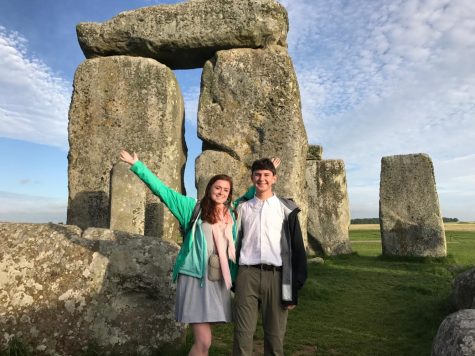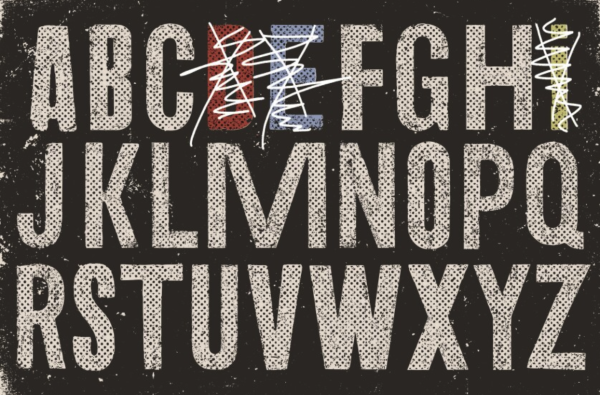Students on Running Through History Learn, Grow, and Bond
On June 4, 2016, 29 adventurous students, as well as four faculty chaperones, took off from the Hartsfield-Jackson International Airport, en route to London. Glancing outside of the windows, the students caught their last glimpses of American soil that they would see for nearly a month. These students were embarking on a four-week long, intellectually and physically stimulating course called Running Through History.
Running Through History, commonly known as RTH, has been a wonderful example of Westminster’s focus on giving global exposure to its students for 21 years. The course was conceived by history teacher and cross country coach Joe Tribble, after one of his runners, Brandon Summers, suggested the idea of taking students to Europe to Tribble in 1995. Unfortunately, Summers became ill soon afterwards, but his idea took off. In June of 1996, Tribble took 14 rising seniors on a 15-day journey around Europe. Initially, students only received credit for an Independent Study.
However, as word spread about the experience, the program began to grow steadily. Students now take a class during the school year to supplement their learning about sites they will see on the trip and the course counts for history credit. The program has expanded to 28 days long with an average of nearly 30 students a year participating. Summers was even able to participate with his younger brother after he had graduated. Although confined to a wheelchair, he traveled everywhere with the students, even making it to the end of Hadrian’s Wall in England. The course is constantly evolving and changing, and for the first time this year, RTH will become a JanTerm as well as a summer course.
“The academic side of RTH will take place during JanTerm,” said Tribble. “I think, with more class time, we’ll be able to have more discussion and be able to write more. It will be interesting to see how this new system develops.”
The discussion and writing will be based around historical sites that students on RTH will see in Europe, as well as historical themes that have affected some of the major cities students visit. Those taking the JanTerm will also be able to see documents and learn through various historical centers around Atlanta.
Before taking the course, students must apply. The application is one of the determining factors to decide who gets into the course, but should not be seen as a deterrent.
“The application process was pretty smooth,” said senior Erik Montag. “We had to pick up a big packet from Coach Tribble, which had a few questions on it. We also had an interview with Coach Tribble and had to ask for letters of recommendation from teachers.”
The students who participated in RTH last year applied for a variety of reasons, and their expectations for applying were met.
“I applied to go on RTH because I had never been to Europe before, and I love history,” said senior Sarah Lawrence McGill. “The course was a perfect combination of two things that I love to do: travel and history.”
Furthermore, other students heard about the trip through past participants giving it glowing reviews and then made the decision to apply.
“I applied partially because I had heard from my friends on cross country that it was a fantastic time,” said Montag. “I actually gave up doing another trip to do RTH because I thought it would be worth it, and it was.”
Once in Europe, the students traveled to seven countries: England, France, Germany, Austria, Italy, Vatican City, and Switzerland. In each country, students visited cathedrals, museums, and other important historical sites. A few of the sites remain the same on every RTH trip, while others vary depending on the year. One of the constant stops is Normandy, on the coast of France.
“I can’t image going to Paris and not going to see the Notre Dame Cathedral,” said Tribble. “However, just a few hours away by train is the Normandy coast. There, you have everything from medieval Bayeux and Mont-Saint-Michel to 20th century history, with the D-Day beaches, which is always a highlight.”
Other sites always visited on the trip include the Imperial War Museum and the Globe Theater in England, the Gaisberg mountain in Austria, and at least one concentration camp. Returning students had a difficult time choosing their favorite part about the trip. Some of the large cities, such as London, Berlin, and Rome, appealed to some of the students.
“I really liked London,” said McGill. “I liked all the museums we visited there, like the Winston Churchill bunkers.”
In addition to visiting world-famous cities, Running Through History stops in smaller areas, such as York, England, and Bayeux, France. Other students enjoyed seeing these less conventional places and sites.
“It was really cool because we did things that I would never think to do on my own like the Sergeant York hike [in Châtel-Chéhéry, France],” said senior Maggie Fowler.
However, hiking in Switzerland and seeing the Matterhorn, a Swiss mountain, seemed to be the group’s overall favorite moment.
“On our last day in Zermatt, Swizerland, it was finally sunny and not overcast,” said Montag. “As you walked up the middle of the town, you could see the Matterhorn in all of its glory, and I felt like I was in a postcard.”
In addition to learning about history through visiting historical sites, students learn other skills such as how to navigate through large cities in small groups.
“On the trip, students learn how to ride various underground systems,” said Tribble. “They learn how to go out to dinner in a foreign city in a group of four and how to manage their money.”
While the students loved the experience that RTH offered, the terror attacks in Europe around the same time cast a shadow on the trip. The day before everyone left for Europe, terrorists drove a van into a crowd of pedestrians on London Bridge, then began attacking with knives, killing eight people. Just two weeks later, a van driver drove his vehicle into a group of Muslim worshippers outside of a mosque in Finsbury Park, London. These attacks did not directly affect the group on RTH, but made everyone more aware of trouble that could strike at any moment.
“The incidents were an opportunity for us to know that what we’re doing, even though it’s supposed to be fun, is still a serious situation,” said senior Ishan Ghosh. “We needed to be careful and always alert of danger that could happen at any time. Staying in a group of four helped with that.”
Remaining wary of one’s surroundings helped the students avoid danger and stay safe.
“At the very least, I felt more conscious of my surroundings and made sure to stay in a group of four and communicate with others,” said Fowler.
However, the attacks did not damper the enthusiasm everyone felt for the trip. They offer their advice for students applying or thinking of applying for the trip this year.
“After you’re accepted, definitely talk to seniors who have been on the trip,” said Montag. “That’s very helpful in knowing how or what to pack.”
However, the students also wanted to emphasize the importance of being independent and not relying on what past travelers had done.
“Do your own thing,” said senior Meghna Patel. “A lot of people listen to the grades above them and rely a lot on them for where to eat and what to wear, and it would have been even more fun if we were all our own people.”
Although the trip’s sites were unmatched, the largest change that came over the group throughout the trip was the camaraderie they experienced.
“I did not expect to connect so much with everyone on the trip,” said Ghosh. “Because our group was smaller than in years past, we got to connect with the whole group, and I created friendships with people who I otherwise wouldn’t talk to much at school.”
The students who went on Running Through History had many different interests and activities, took different classes, and had different reasons for coming on the trip. However, the trip gave them a common bond that will never go away.






